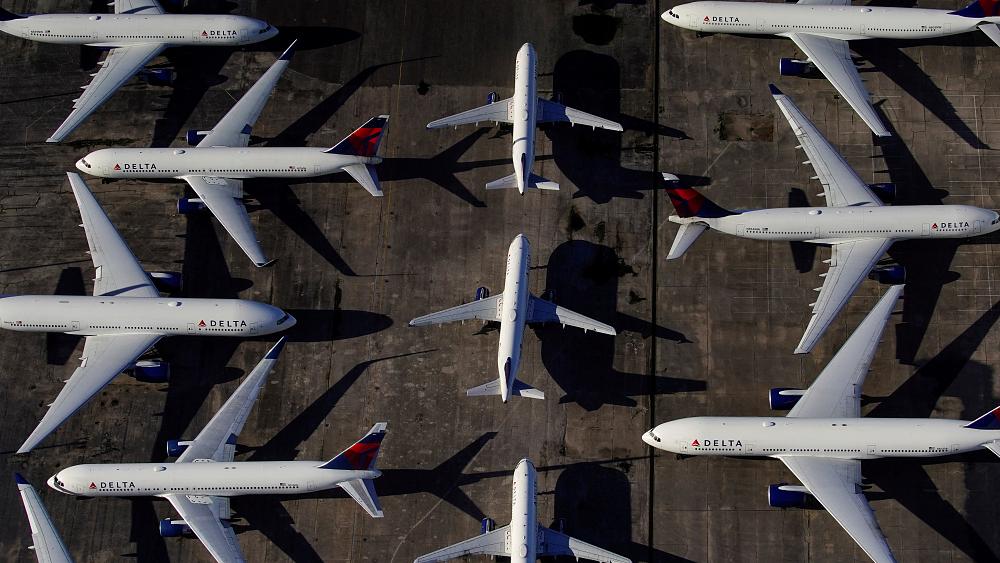[ad_1]
The true price of flying might be far worse than we thought – with two-thirds of the local weather impression coming from emissions that aren’t CO2.
Alongside this greenhouse fuel, plane engines emit different parts like nitrous oxides and sulphur dioxide in addition to particulates such as soot when gasoline is burnt. These all contribute to what are generally known as the non-CO2 local weather impacts.
At excessive altitudes, these emissions can have an effect on the bodily and chemical properties of the environment, resulting in a rise in greenhouse gases and the formation of contrails (condensation trails). The consequence is a web warming effect on the climate that’s greater than that of CO2.
A European Fee report utilizing the newest obtainable science was printed in 2020 and located that the non-CO2 impression of aviation was twice that of CO2 impression.
NGO Transport & Setting (T&E) argues these potential climate-warming emissions are usually not coated by the EU’s most up-to-date clear aviation legal guidelines. General, because of this round two-thirds of the local weather impression of the sector might be unregulated.
“When studying the EU’s 2030 local weather package deal, printed final 12 months, generally known as ‘Match for 55’, it’s straightforward to see that there’s barely any point out of non-CO2 results or the proposed coverage measures to deal with them,” the clear mobility NGO wrote in a current briefing.
CO2 emissions are “simply the tip of the iceberg” based on T&E. Whereas reducing CO2 emissions has been the main focus of the trade to date, a fair greater local weather drawback has been “flying underneath the radar.”
How can we cease different dangerous gases being launched throughout flights?
Carlos López de la Osa, aviation technical advisor for T&E, explains that there are a variety of options to monitoring and mitigating non-CO2 impacts.
Understanding flight paths, the gasoline burn of an plane alongside the ambient temperature and humidity may assist keep away from the formation of contrails. It’s a “promising answer for the quick time period,” López de la Osa says.
The composition of jet gasoline may additionally present a means of avoiding non-CO2 impacts on the local weather. As a way to minimize aviation’s environmental harm, consultants suggest that sure hydrocarbons needs to be diminished in jet fuels, e.g. aromatics, naphthalene and sulphur (associated to soot formation).
Irish MEP Ciarán Cuffe has now urged an modification to the EU rules that may see a progressive minimize within the fragrant and sulphur content material of aviation fuels. There’s a reluctance to do that as these parts are wanted to verify planes operate optimally, lowering the possibility of seals breaking, gasoline leaking or pumps turning into unreliable.
Sustainable Aviation Fuels (SAFs), the usage of which is able to improve underneath the ‘match for 55’ proposal, normally include no aromatics.
This makes them a extra enticing choice to cut back each CO2 and non-CO2 emissions.
[ad_2]
Source link


Neue Kommentare